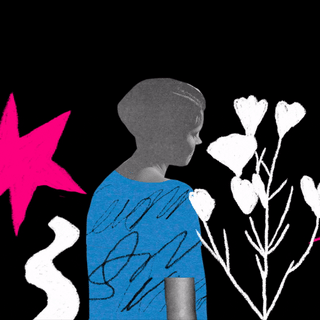There’s nothing like the violent murder and violence against women for a nation to project its deepest fears.
This week, details of the murder of a 27-year-old woman by her partner shook the nation. She reportedly lived with her partner in Delhi, where an argument led to the man strangling her to death and, subsequently, cutting her body into pieces. The news predictably inspired shock and, as these stories often do, became a cautionary tale. In dissecting parts of her personal life after her death, the narrative around the murder repeats a form of violence on the victim even in death.
It’s a familiar sequence of events when middle-upper-class women are subjected to brutal violence. The case becomes a narrative device for reinforcing middle-class mores of respectability; and victims’ bodies inevitably become a site for inscribing the codes of honor that they violated in their life. Take the fact that there’s been much emphasis on certain facts of the victim’s life: the fact that she was unmarried, that she met the perpetrator through a dating app, and that it was an interfaith relationship. The media’s voyeuristic gaze on the exact manner and extent of the violence juxtaposed with these details serves a purpose: it signals a warning to other women who stray from prescribed norms.
In this case, the victim strayed from her religious community — now, her father allegedly suspects a “love jihad” angle to the murder. The implicit messaging is that the community protects, and women are representative of community honor; violating that honor is fatal.
Then, many have begun to make inferences about her based on her appearance: her lip piercing and short hair are all markers of deviated respectability, leading some to say that this is what happens to “woke feminists.” Another strand to the narrative is parental defiance: “What beats me… is how easily she could trample all over her parents’ feelings and desert them but lacked the guts to walk away from an abusive partner! This is peak feminism I suppose?” read one tweet by an account with a large following. Another viral tweet requested all women to “please be aware of these social media apps, dating apps… don’t sacrifice your parents for anyone.”
The details of the victim’s life that are chosen for public consumption are the ones that lend themselves to patriarchal, bigoted narratives. In a way, her story is no longer hers, but belongs to a nation bent on defining its values through her death.
Related on The Swaddle:
As a country, we’ve done this before. The Aarushi Talwar case in Noida back in 2008 involved the unsolved murder of a 13-year-old girl in her home. At the time, the police and the media, struggling to rationalize the killing, came up with an angle that would “justify” it: she’d become sexually intimate with her domestic worker, and her father killed her in a rage. The “honor killing” angle eventually stuck, and became the basis of her parents’ eventual conviction. The CBI — and then the media — then went on to villify Talwar, and it became yet another cautionary tale laced with protectionism about the precocity of young girls. That there was as much emphasis on the forensic details of her vagina post mortem, her school relationships, and the salacious speculation about what she must have done with the domestic worker is telling by itself. As far as the public is concerned, there has to be a reason that something like this would happen to a young girl from a “respectable” family. And the reason almost always has to do with her honor, purity, and obedience.
Then, there was the Nirbhaya gangrape case, which was used to define the type of woman who can access martyrdom in death. Scholars analyzed the reporting around the case to note that the media has a bias toward “stranger rape” where the perpetrator is detached from society, and isn’t within the private sphere of the family. This told one story that upheld notions of patriarchal control and protectionism. Now, however, the narrative shift toward emphasizing the social location of the perpetrator appears like the opposite of what happened with the Nirbhaya case — but it still serves the same purpose. Irrespective of the perpetrator, the overwhelming narrative is one of protectionism and caution — urging women to stay within their social and moral bounds, and warning of the consequences for breaching them.
When we subscribe to these narratives, women all over the country are rewritten as victims of future crimes. The experience of life outside the bounds of an imposed morality is even more forbidden — the constant messaging is that unspeakable consequences await those who stray.
In the Delhi murder case, as it’s been dubbed, the story of the woman remains sordid and incomplete. We know the details of her life as we want to know them — not as they really were. And we may perhaps never know, which makes it that much more important to resist the narrative of pain and violence that now defines her short life. This means resisting the imposition of stories on bodies living and dead — and treating life outside the norm itself as resistance.




